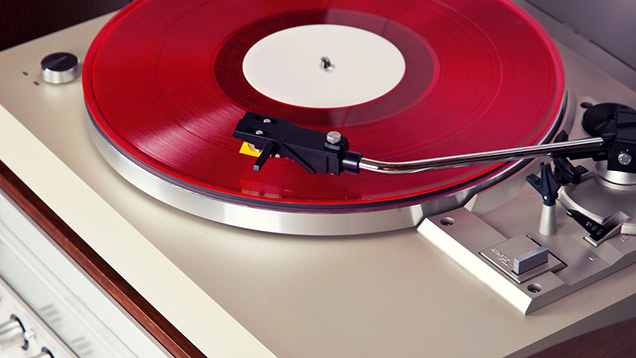Digital vs. analog
 CREDIT: VIKTORUS / THINKSTOCK
CREDIT: VIKTORUS / THINKSTOCKWhat's all the noise about?
When digital music first rolled onto market in the form of CDs, people were hesitant to accept it as the superior listening format. Despite being the better medium in terms of dynamics and sonic accuracy, consumers still clung to their collection of vinyls.
The CD felt more like a dinky novelty, with its plastic case and tiny disk, than it did a tangible piece of art. At face value, the argument of digital vs. analog is completely superficial, but if we dig a little deeper into digital music standards, we’ll find renewed value in the analog format.
The dawn of digital music brought the loudness wars. Everyone wanted to be the loudest band on the radio and over the years this led to a demise of the CD’s once superior dynamic range. The loudness war focused on reducing the quiet and loud parts of a song so that every second is at the same deafening volume. Although this allowed songs to be louder than ever, it compromised a crucial element of music. The digital music experience became shallow, and listeners were subjected to accelerated ear fatigue, making it difficult to enjoy music for long periods of time.
Although this is a con for digital music, it’s a con for analog music as well. Most CD albums that are re-released for vinyl haven’t been re-mastered or altered for the strength of the medium. Mastering an album for vinyl is an expensive process that, due to rampant pirating, few bands can afford. As a result, most vinyl re-issues have been taken from the CD masters, which are of course victims of the loudness war. Taking a CD album and printing it to vinyl degrades the music, introduces distortion and sabotages the inherent warmth of analog. If you’re looking for authentic vinyl quality, check the band’s website first or buy a vinyl that predates the CD.
The one place where analog music overcomes digital music without a doubt is file quality. When music was being printed to vinyl, the actual amount of data in a song wasn’t a big issue. In the analog era, when a band couldn’t release a record on one vinyl, they’d release a double album and everyone was happy. At the beginning of the CD era, digital music didn’t have this luxury.
Sure, you could put more data on a CD, but when a hard drive ran out of memory space, it was going to cost a pretty penny to get a new one. Nowadays, space isn’t an issue as we can get a terabyte hard drive for less than $100, but unfortunately the standards were set in stone long before 2016.
The regrettable standard of digital music is the mp3. This format offers a compressed version of music that takes a 46 MB WAV file down to about 4 MB and is responsible for destroying the quality of digital music. To cut a file down this steeply, much of the data is simply thrown out. The essence of the music is still there, but we’re missing out on the critical little details that really bring it all together.
To make matters worse, people like TIDAL bigwigs have taken advantage of these low expectations of music and are trying to profit off of reintroducing it to market. TIDAL asks subscribers to dish out $20 a month just to hear music as the artists originally intended it to be heard.
In the end, each format has a benefit. Digital music is portable, and you can carry large libraries with you, but with a sacrifice in quality. The analog music is tangible and carefully crafted, but it’s very much an in-home activity. The question of which is better boils down to your environment.
If you want to get in the zone or set the mood at home, try putting on a record and see how fast things develop, but if you’re about to train for that 10-kilometre run, maybe leave the record player in your bedroom.














